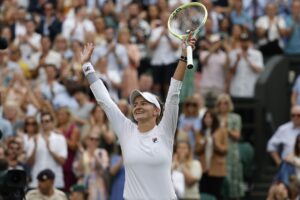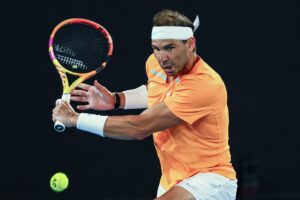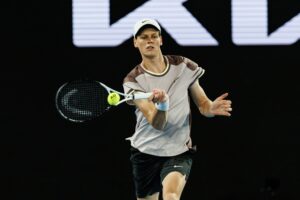Team Serbia
Serbia has absolutely breezed into this semifinal as the #8 seed in the tournament and former champions in 2010. They were able to triumph over a talented but inexperienced Russian squad and a strong Spanish team by winning the first three matches in each tie to clinch and go on to win 4-1. Both matches were played in Serbia on indoor hard courts.
Serbia begins this tie with a very different team than the one that led them to victory in the first round and quarterfinal. The two Serbian players ranked inside the top 50 in singles, Novak Djokovic and Viktor Troicki, are both missing this semifinal tie. This will be a massive loss for the Serbians, as the two players combined were 4-0 in singles, with Triocki in addition winning both of the doubles matches that he played. In addition, former World #8 Janko Tipsaravic will miss the tie as well, leaving Dusan Lajovic as the top ranked Serbian in singles at #80.
Lajovic is a respectable 7-6 in singles in his career at the Davis Cup, but he lacks the firepower that the top Serbians have. He will be joined by World #95 Laslo Djere, the inexperienced 22-year-old who brings potential talent but not experience, as he will be playing in his first ever Davis Cup tie. Serbia still brings three-time men’s doubles Slam winner Nenad Zimonjic, but he played his prior two Davis Cup matches alongside Troicki, so he will have to play with a new partner against the French. That partner may be the final member of the Serbian team Filip Krajinovic, who played with Zimonjic in the 2016 Davis Cup. He may be asked to play singles, as he is more experienced than Djere, but has lost his last five sets played in Davis Cup matches, so Djere is probably the most likely option. Serbia has a lot of question marks, but still brings players who although are not at the top, have been able to win matches on tour.
Team France
France also did not have much difficulty reaching this point in the tournament, as the 6th seeded country also won both ties by a score of 4-1, with both ties being clinched after three matches were played. They faced a little more of a challenge than the Serbians, but did not see a serious fight. They had to travel to Japan in the first round, but there they faced a not very deep Japanese team that the French had little trouble with. Then they faced a British team without Andy Murray, who still boasted some talent but nowhere near enough to make the tie very competitive. France beat the British in France, and will again be at home–this time at a new venue but on the same surface, red clay, that they played on against Great Britain.
France has also shuffled its lineup, but has the luxury of much stronger depth, with seven Frenchman ranked in the top 50 for singles. This tie, the Frenchman will have their two highest ranked players, Jo-Wilfried Tsonga and Lucas Pouille, both ranked inside the top 25. In addition, Pierre-Hugues Herbert and Nicolas Mahut, two-time Major champions together and formerly the top two doubles players in the world, round out the four-man team. Pouille will be comfortable playing on clay, his best surface, and Tsonga brings experience having played in 17 Davis Cup ties and has a 15-3 record in matches played on clay.
Prediction
France will simply be too much for the Serbians, having a heavy advantage in the singles ties as well as the doubles tie. France also has chosen the surface to benefit them and will have a home crowd behind them. This tie is a prime example of the reason many complain about the Davis Cup, as this Serbian team is completely different from the one that won the matches that allowed them to reach this point. Crazy things have happened in the Davis Cup in the past, and after this year’s US Open, it’s anyone’s guess what to expect. That being said, Serbia would have to pull off three large upsets in five matches to take this tie, so France is highly likely to move on and it would not be out of the question for them to pull out a sweep in nine sets.
Main Photo:
Embed from Getty Images






